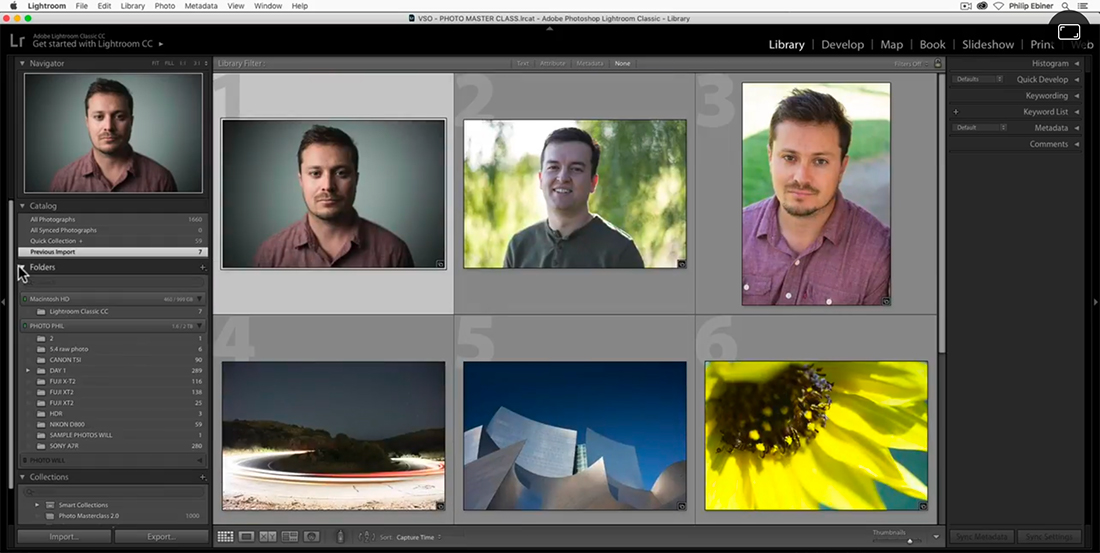

Presets are very popular these days since many photographers make money by selling them through social media. On the left-hand side, you can control Presets, Snapshots, History and again Collections.
#Lightroom tutorial full#
Remember, you want to shoot in RAW so that in Lightroom you can have full control of color contrast, curves, saturation, white balance and so forth. Well since a JPEG file is just a RAW file that has had some additional processing applied in-camera. You might ask why people want to obtain less contrast, less saturation, and vibrancy on an image? Shooting in RAW format will produce low contrast and low saturated images.
#Lightroom tutorial professional#
But before let’s talk about the layout of this module.īefore introducing this section, it is extremely important to know that professional photographers and serious hobbyists shoot their photos in RAW mode. You’ve imported and organized your images, now it’s time to have fun and edit them. Image shot with Olympus OM-D E-M1 Mark IIĪt the top of the screen, you can switch between different modules. I dedicated an entire section on this guide to keyboard shortcuts.Īt the very bottom of the screen, you have a miniature version of your photos, useful to scroll through your images when you are in loupe mode. You can quickly choose one of these views by using your keyboard. You can choose to compare photos against one another and choose a People to view where Lightroom’s face recognition algorithm will group together photos with people’s faces. The bottom part of the middle section includes the so-called toolbar where you can switch between grid and loupe views. I’ll explain everything in a moment in the next section of this article. Clicking on the thumbnails you can rotate them, add them to a collection, flag, rate and label them. In the middle of the screen, you have your images. You can add an image to as many collections as you like. I’ll explain this section in detail later, for now just know that you can think of collections as something similar to a music playlist. It is extremely important and it’s where you can really speed up your workflow and harness the full organizational power of Lightroom. Then you have the Collections section always on the left-hand menu. On the left-hand side, you have the folder structure in your computer, and from this menu, you can add more folders to import extra files. The main benefit of this Lightroom module is that it gives you the tools you need to get organized and speed up your workflow. This is where you organize your images and build your catalog. import them into Lightroom by just Adding them to your catalogĪs I’ve said before, leave Lightroom to decide the location of your catalog and remember if in the future you decide to change that location, make sure you leave it in your computer hard drive so that you avoid performance issues or avoid compromising your data.Īfter importing your photos, you’ll be back into the Library panel or Library module.copy and paste those images into either your computer or I highly recommend getting an external hard drive and then.So what you want to do when you come back from a photo shooting is to: My suggestion if you are at the very beginning is to stick to the “Add” mode for now. You can also save your Import settings as presets and use them for other imports. Best Nikon Lens for Landscape Photography.Best Canon Lens For Landscape Photography.Landscape Photography in Low Light Conditions.Affordable Cameras for Landscape Photography.

Landscape Photography Tips For Beginners.


 0 kommentar(er)
0 kommentar(er)
